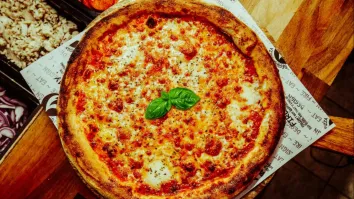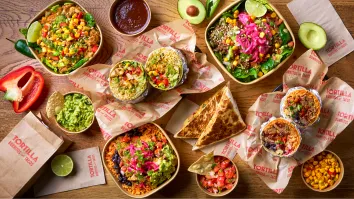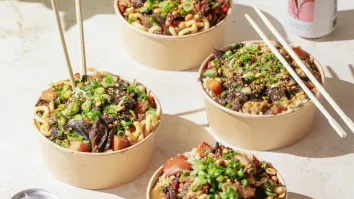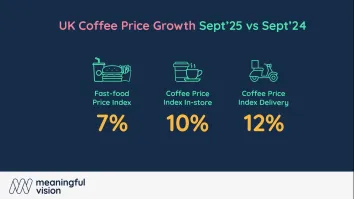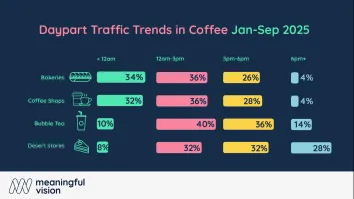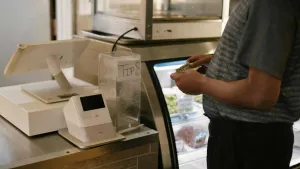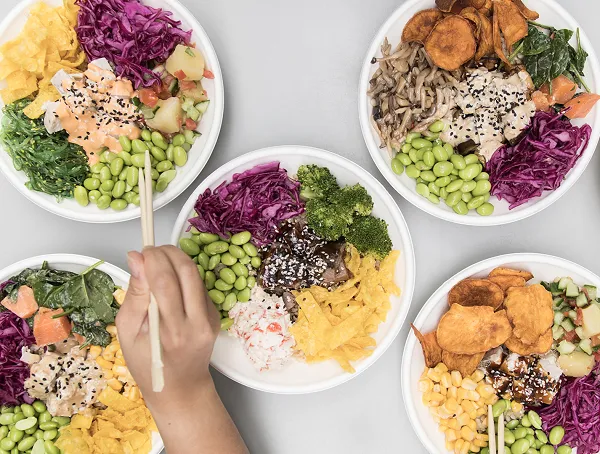
No mere fad, the poké invasion in Australia is here to stay
But how should competing brands that feature the Hawaiian dish separate themselves?
Poké restaurants in Australia, while ranging in their offerings on the healthy and delectable dish, perennially share a too-familiar origin story: a simple encounter with a poke bowl in the United States.
“One of our founders first tasted the delicious dish during his travels in the U.S. a few years ago and he couldn’t stop eating it. At the time, the trend was starting to explode over there and there was nothing in Melbourne like it,” said Thomas Hu of Poked.
Nudefish Poké CEO James Nathan says he “fell in love” with the Hawaiian dish after seeing it in Los Angeles, California with his business partner.
“Honestly, we thought we could do it better - better than what we saw in Australia and also in Los Angeles, so [we] went back to Los Angeles on a market research trip together before setting up our first shop in Greenwood Plaza in North Sydney and expanding to MLC Centre and Bondi Beach,” he said.
For SUKI, poké’s arrival in the country in the past years was a long time coming: “Australia has for a long time now followed the North American food trends of which Poké has been in for swing now for years. The relatable climate of California to that of Australia made the arrival of poké not far away.”
Poké: a fresh, healthier alternative in the QSR market
Whilst differing in how they came to introduce it in the country, the three brands say that the emergence of the popular poké was a logical response to the rise of healthy eating trends internationally.
“There’s no doubt that the whole world is on a health kick, with consumers all over the world looking for fresh and healthier alternatives to what they are used to eating and arguably are willing to spend that little extra for it. We can see this across the fast casual and QSR market worldwide, with food provenance being at the heart of so many businesses as customers demand to know more about what they are eating, where it has come from and how it is prepared,” Nathan said.
Citing his medical background, Hu says such uptick is due to greater public awareness of health and a cultural shift away from idealising consumption towards living a happier and healthier lifestyle.
“Research suggests that the dramatic rise of heart disease, blood pressure, diabetes, and obesity in recent history is associated with the highly processed modern diet and sedentary lifestyle. So, I feel this trend is only going to get stronger as more government funding goes into educating us and our kids about healthy eating and lifestyle habits, and more employers look to promote an active workplace.”
SUKI cites social media as a catalyst in the rise of the healthier eating trend. “Food trends rise and move at the posting of a photo. People are spending more and more time on social networks and refer to these advertising mediums in a big way to determine what they will eat, wear, stay and drink,” a representative for SUKI said.
2014 is reportedly the year when poké was introduced in Australia, courtesy of Love Poké. Now, with brands like Poked, Nudefish, and SUKI finding similar inspirations and offering varying innovations – the so-called poké invasion is successful making its presence felt in the country.
Poked, starting out as a single store in 2016, has now 8 stores across Victoria and New South Wales with a current team of over 120 staff and further plans to expand despite stiff competition.
“We try to stand out by focusing all of our time and effort on our customers, our staff, and our product. We don’t tend to worry much about our competitors, because we believe that focusing on making our customers and staff happy is what will make our experience extra special and non-reproducible. Our brand represents the energy and enthusiasm in our team, and depends a huge amount on the amazing team that we have since they are the front line of our business,” Hu said.
SUKI – who’s set for their nationwide expansion in 2019 – takes pride in their “freedom-of-choice” style, where customers can create their own fun flavours.
“We have a set menu that we have had our nutritionist breakdown for us which our customers love to use as a starting point before branching out and creating their own fun flavours. The fun of modern food is the freedom of choice which is why SUKI hasn't just catered to the raw fish eaters.”
Nudefish, meanwhile, cites their chef-driven expertise, “boat-to-bowl” philosophy and complimentary offerings as their distinguishing marks from the competition. They are also set to open more stores this year, prior to their own national roll-out plan by 2019.
“Whilst anyone can buy some fish and a bottled sauce and call it poké, we make all of our sauces and pickles in house, and ferment chilis for our house made green sriracha. We have our own line of cold pressed juices made exclusively for Nudefish, and our winter menu which we are about to bring on features some warm bowls and also, our take on a classic Ochazuke, where a miso broth is poured over your bowl to slightly cook your raw fish,” Nathan said.
Branding beyond the craze
Food and beverage crazes typically result in fresh, younger retailers popping up – similar to what is being seen in the past years with such poké sites. But how exactly do such brands distinguish themselves from their competitors in the market?
A branding expert explains that businesses who succeed in capitalising on such crazes understand and appreciate the value of investing in a strong brand.
“First and foremost, it’s crucial that people know what it is you sell (or your brand at least gives some strong clues) and that you are immediately trustworthy. There is a big education piece that comes with a new food or beverage type before it becomes a craze,” The Creative Method’s Tony Ibbotson said to QSR Media.
In building a brand, Ibbotson says the most important piece to start with is the story – prior to exploring visual territories such a logos, packaging, menus, and even uniforms. Storytelling, according to him, is the oldest but best form of branding that can create emotional connections with a customer base.
“Everyone has one and we spend a lot of time working with our clients to understand theirs; what makes them unique (hint: it’s not the freshest ingredients), why they are passionate about what they do (outside of making money), and why someone would choose their store over a competitor? The best brands engage all the senses – sight, sound, smell, taste and touch.”
From his perspective, the retailers excelling in their brand strategy are ones who are “bold and a little daring” in their approach.
“They want to be the leaders and not the followers; prepared to make mistakes but to learn from them quickly and move on. It's easy to do what everyone else does but much harder, and ultimately more rewarding, to create something more unique and disruptive,” he added.
Ibbotson does recognize the challenges of running a young business – whether stemming from a food and beverage craze or not. He says that in order for those brands to be memorable, he asks them to understand their “why.”
“You need to be clear about why your brand or product exists outside of purely making money. What problem or barrier are you looking to break with your business? What is your unique story? What is your North Star? Whose business will fail if yours succeeds?”


